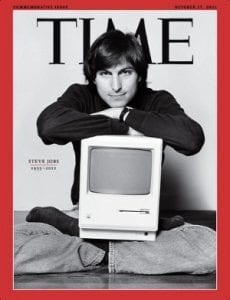
Cover letters can make or break your job search success
The job hunt is similar to a three-course meal. Your resume cover letter is the appetizer—great on its own, but designed to make a potential employer’s mouth water in anticipation of the main course. Your resume is the main dish—full of meaty, satiating information. And the dessert—the sweet part—is getting the job.
In this case, the appetizer might be the most important part of the meal. Paired with a solid resume, a strong resume cover letter can make you stand out in a pool of job applicants, whereas a weak resume cover letter can land you in an employer’s discard pile.
What is a Resume Cover Letter?
A resume cover letter is your opportunity to explain to the employer why you would be a good fit for the job opening. A resume cover letter is usually no more than three to four paragraphs long, and it fleshes out the skills and experiences displayed on your resume.
Structure of a Resume Cover Letter
Here is a basic outline for a good resume cover letter:
Your Name
Your Address
Employer’s Name
Employer’s Address
Date
Dear (Employer’s Name),
Paragraph One: The Intro
The first sentence is the most important in the whole resume cover letter because it is your hook. Write something that will make the potential employer want to read further, and try to connect the sentence to the position for which you are applying. For example, if you’re applying to a teaching position, say something about how you’re passionate about working with kids, as demonstrated by your three years of teaching experience and volunteer work. Then use the rest of the paragraph to summarize; your employer should be able to read your first paragraph and get all the important points you want to include in your cover letter.
Paragraph Two/Three: The Nitty Gritty
This is the place to expand on the skills and experiences listed in your resume. (Even if you worked in the lowest position on the totem pole, you still gained valuable experiences that you can apply to other jobs!) But be sure not to simply parrot what’s on your resume; tell the employer how the skills and experiences you’ve developed will make you successful in this position. For example, if your resume says you “interacted with customers and answered inquiries,” then your cover letter should say that your “daily interaction with customers has developed excellent customer service and communication skills.” Three skills that all employers look for in a potential employee: organizational skills, communication skills, and interpersonal skills.
These paragraphs are also a good spot to explain any gaps in your resume or things you didn’t have room for. If you’ve been unemployed, you can point out how you’ve been productive in the meantime. If you didn’t have room for certain activities or experience that you feel are relevant to the job description, then use this space to address them.
Paragraph Four: Wrap it up with some action
By now you should be done with the substance of your letter and it should fill about three-quarters of the page. Paragraph four simply exists to thank the employer for his/her time and inform them that you will be in touch. Unless the job posting says not to contact the company, tell the potential employer that you will follow up with them in 1-2 weeks. Be sure to include your contact information in case they want to get in touch with you sooner.
Sincerely,
(Your Name)
What Sets Your Cover Letter Apart?
Employers can get hundreds of resumes and cover letters for a single job posting, so what will make yours stand out? One way is to show that you’ve done your research on the company. Recruiters can see right away if your cover letter is cookie-cutter. You’ll have an advantage if you show that you’re aware of the company’s presence in current news and that your hopes and dreams align with their mission and goals.
Another advantage is if your cover letter is well-written and uses impeccable grammar. Employers judge your communication skills and professionalism by your cover letter, and no one wants to hire an employee who will send out sloppy communications to their clients. Even if someone is well-qualified for a position, his cover letter might go straight into the dustbin if his writing is garbage. So save yourself the hour or so that it took you to write the cover letter by taking 15 minutes to proof-read it.
When Do/Don’t I Send a Cover Letter?
According to an article on msn.com, a recent OfficeTeam survey reported that “86 percent of executives thought cover letters were a valuable resource in the hiring process.” Therefore, unless the job description specifically requests you not to send a cover letter, you should send one. However, there are a few industries that don’t require cover letters, like IT positions or part-time jobs. But it never hurts to include a cover letter; in fact, if the letter is good, your potential employer should be impressed with your effort.
How Do I Send a Cover Letter?
These days, applying to jobs has moved to almost 100% online, whether through online job forms or through e-mail. Many online job applications ask you to cut and paste your cover letter or to upload your cover letter as a .doc or .pdf file. Just make sure that the formatting of your cover letter is basic (think 12pt Times New Roman font in a Word document), so that things don’t go awry when your potential employer tries to open your file.
When applying to a job through e-mail, you have two choices as to how to present your cover letter. On the one hand, you can make the cover letter the body of your e-mail, and you can mention in Paragraph Four that you’ve attached your resume to the e-mail. On the other hand, you can write a quick blurb to the employer summarizing your cover letter (not more than 3-4 sentences), reiterate your contact information, and point out that you’ve included your cover letter and e-mail as an attachment. When saving your cover letter file for later uploading/attaching, make sure you give it an easily recognizable file name, like “Cover Letter for John Doe.” That way your potential employer will remember who that wonderful person was that they were going to call for an interview.
Bon Appetit
As with preparing any scrumptious appetizer, writing a good cover letter will require lots of hard work and time. But the more cover letters you write, the more concise, articulate, and efficient you will become. And, after a few days or weeks, all that hard work will pay off and you will finally be able to dig into the delicious feeling of landing a job. If you’re looking for a good cover letter writing service, you can also go to Amazing Cover Letters and have your cover letter professionally written.












-231x300.jpg)


